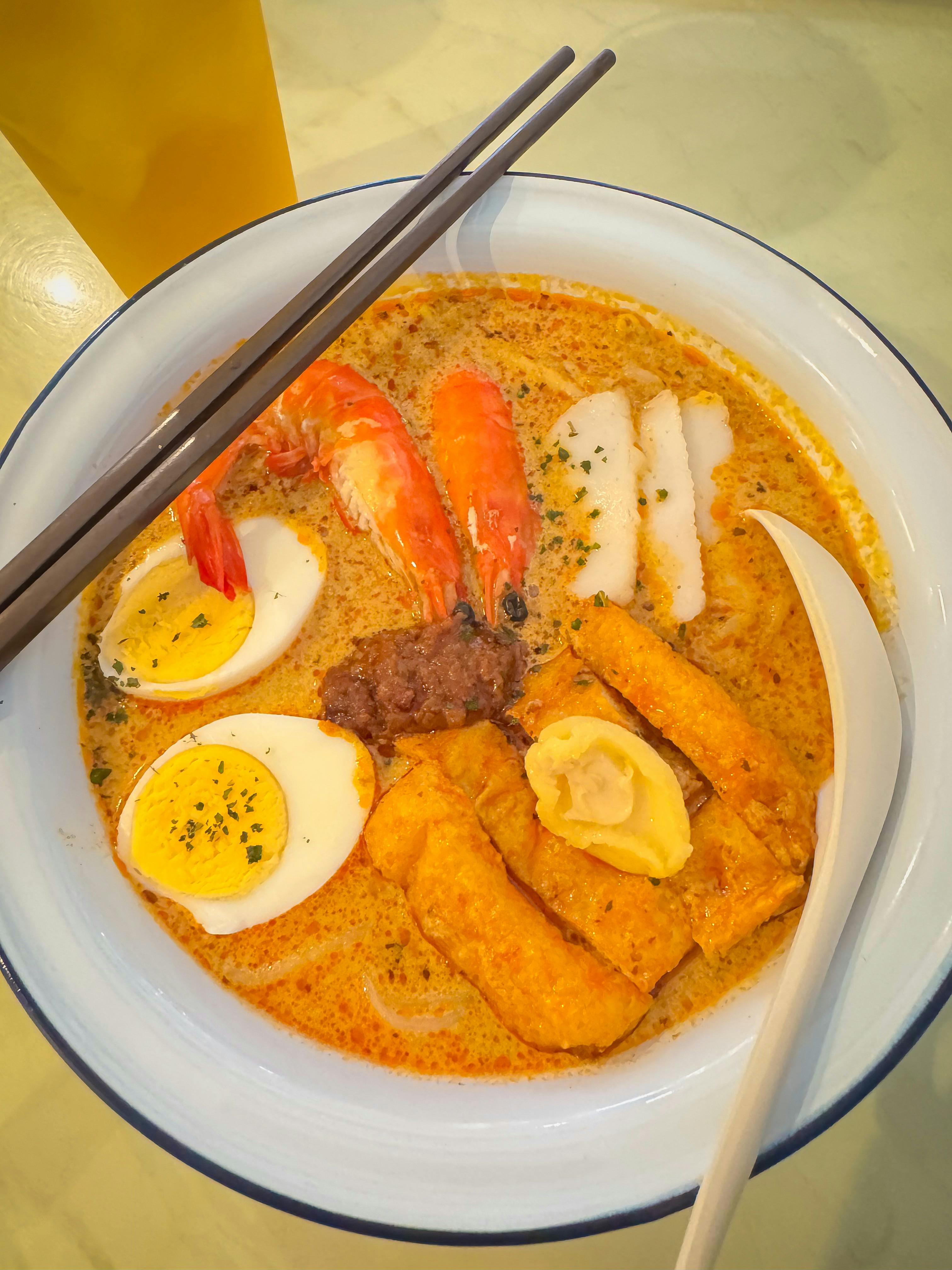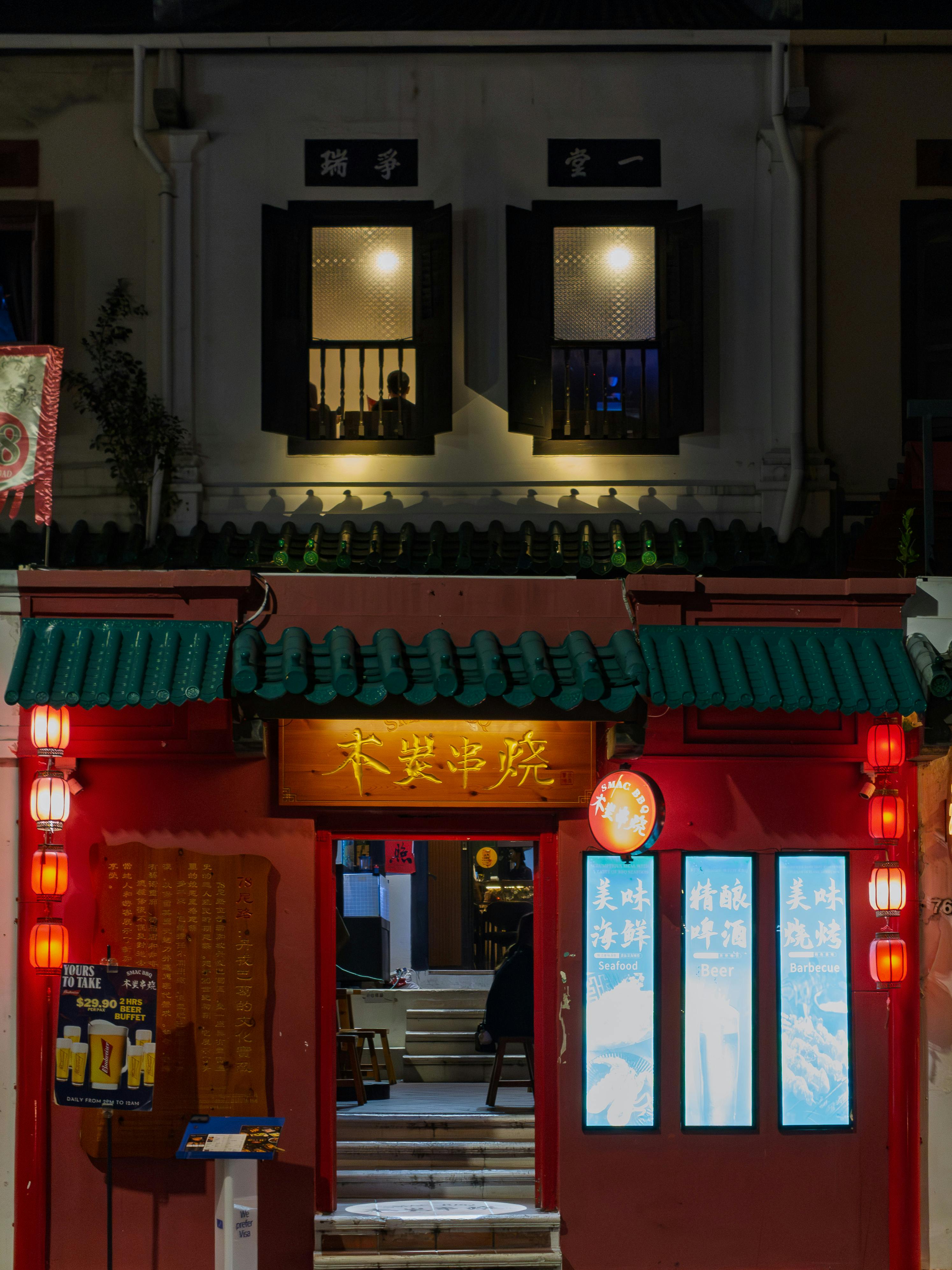Singapore Hawker Success: Laksa Business Strategies That Work
Every time I step into a humming Singapore hawker center—aromas swirling, voices bouncing between tables—I’m reminded just how central food is to this vibrant city-state’s identity. Honestly, street food isn’t just fuel here; it’s a living archive of the nation’s ingenuity and adaptability. You’d think it’s all just about the recipes, but what strikes me (especially after spending long afternoons buried in the Mayflower and Maxwell hawker centers) is how the best Laksa stalls run as hyper-efficient micro-businesses, balancing authenticity, profitability, and raw street energy seamlessly.1
There’s something thrilling—and nerve-wracking—about running a hawker business. The competition is fierce, margins can be razor-thin, yet the opportunities for innovation and loyal followings are massive. I’ve watched Laksa sellers transform their fortunes with surprisingly smart tweaks, sometimes by pure gut instinct, other times by heeding market data or lessons from older generations.2 This post isn’t about generic small business theory; it’s a close-up, real-world guide to managing a hawker stall specializing in authentic Laksa, mixing local wisdom, tried-and-tested management techniques, and honest observations from my own work consulting on food entrepreneurship in Singapore.
Why Laksa—and Why Hawker Centers?
Let’s get honest here—if you ask any Singaporean about street food, Laksa tends to pop up almost immediately. Thick, coconut-based broth, slippery rice noodles, a fiery sambal dollop; it’s evocative, iconic, and, from a business perspective, absolutely brilliant for mass appeal.3
Key Laksa Business Advantages
- Universal flavor profile—unites locals and tourists
- High scalability and relatively low ingredient cost
- Excellent for repeat sales: comfort food, weather-proof
- Flexible menu: vegan, seafood, or traditional variants
Running a hawker center stall is not for the faint of heart, though. It’s dynamic: you’re adjusting recipes for the rain season, juggling rising rent, and negotiating with suppliers right out in the open—a literal fishbowl of public scrutiny, competition, and opportunity. Sometimes, just when you think you’ve nailed the perfect Laksa, a nearby stall introduces a “Laksa ramen” and everyone flocks there for weeks.4
What Makes Singapore’s Hawker Centers Unique?
- Decades-old regulatory frameworks that balance hygiene, tradition, and innovation
- Low barriers to entry, fostering real grassroots entrepreneurship
- Intense real-time feedback loops: direct customer input shapes daily business choices
- Inbuilt community identity—a hawker’s reputation often lasts generations
In 2020, Singapore’s hawker culture was officially recognized by UNESCO as an Intangible Cultural Heritage, cementing its role as a global model for street food management, community value, and culinary innovation.5
My First Close-Up: Laksa Lessons on the Ground
Back when I first started consulting for hawker stalls (early 2018—right before the GrabFood boom shook things up), I spent close to a month shadowing a Laksa stall at the famed Tiong Bahru market. My first real lesson? The best-run stalls don’t just do one thing right—they deploy dozens of tiny efficiency hacks, most invisible to outside eyes.6 The owner, Mrs. Tan, had this wild system: she’d pre-cook chicken in batches at 5 a.m., portion everything in color-coded bowls, and use a simple clicker to track orders. For years, I thought “authenticity” was mainly about flavor, but actually—it’s systems, speed, and customer handling.
Let’s dig into those nuts-and-bolts business techniques next. But (actually, let me clarify)—we’re going way beyond recipe tweaks or catchy signage. This is real-world, boots-on-the-ground advice forged in the heat of hundreds of lunchtime rushes and market evolutions.
Proven Laksa Stall Management Techniques
Process Optimization: Speed, Hygiene, and Flow
There’s a reason why veteran hawkers meticulously lay out their ingredient trays every morning—predictability breeds speed, and speed is the silent engine of profitability. Funny thing is, the best-run stalls aren’t always the flashiest; the operators focus on back-end rhythm, not just front-end charm.7 If there’s anything I’ve learned from shadowing stall managers, it’s this: reduce decision fatigue for yourself and your crew.
- Batch prep your laksa paste and soup base—no last-minute blending
- Adopt clear visual zones: order taking, cooking, garnishing, cashier
- Use washable, color-coded containers for allergen control
- Track time per bowl and optimize bottlenecks immediately
My Favorite Hawker Efficiency Hacks
- Pre-labeling order tickets for regular lunch groups
- Offering smaller bowl sizes during off-peak to boost upsell
- Rotating cleaning tasks every day (not just after close)
- Quick refill stations for condiments and utensils
Customer Experience: The “Four-Minute Rule”
In my experience, the simplest feedback system is usually the most honest. Hawker centers are direct—if you’re slow, rude, or your Laksa tastes “off,” customers vanish. “The Four-Minute Rule” is gospel in almost every successful stall I’ve worked with: if a customer gets their bowl within four minutes, and it’s piping hot, your return rate climbs.8
Social media listening matters too. Nowadays, diners snap and share in seconds, influencing walk-in footfall far more than flyers or even location. My own clients have seen Monday sales spike just from a single viral TikTok. (Let me think about this—social sharing isn’t just marketing, it’s reputation insurance.)
Pricing, Cost Control & Ingredient Sourcing
If there’s one ongoing headache, it’s managing cost swings—coconut milk prices fluctuate, seafood deliveries get delayed, rainy season spikes stall costs. The clever hawkers develop alternate supplier relationships (at least three!). I once saw Mr. Ng at Berseh Food Centre switch suppliers on the fly when his regular grocer ran out of fresh cockles.
| Ingredient | Peak Season Price (SGD/kg) | Off-Season Price (SGD/kg) | Notes |
|---|---|---|---|
| Coconut Milk | 4.50 | 5.80 | Source locally; batch-buy for discounts |
| Rice Noodles | 2.00 | 2.20 | Largely stable, but quality varies |
| Cockles | 6.50 | 9.00 | Best bought fresh; consider frozen backup |
| Sambal Chili | 3.20 | 3.80 | Homemade preferred; outsource if necessary |
Just yesterday, while reviewing supplier invoices, I noticed how some stalls were overspending on branded coconut milk, thinking it’s all about taste. Actually, generics work just as well for base blends, with branded options reserved only for top-layer drizzles—a little self-correction on that long-held assumption.10
Regulation, Hygiene & Sustainability
Singapore doesn’t mess around with food safety. Licensing, spot checks, and the infamous “Grade A” stickers on stall fronts—these are more than government bureaucracy, they’re concrete lifelines for building trust. I used to think you could get by with “pretty good” cleaning. Nope. It has to be spotless: worktops scrubbed, utensils sanitized between rushes, ingredient bins sealed tight.11
Regulatory Must-Dos for Hawker Laksa Stalls
- Register with the National Environment Agency (NEA)
- Pass quarterly hygiene inspections—Grade A/B only
- Document allergen ingredients for transparency
- Utilize eco-safe disposables and minimize food waste
Over 80% of Singapore hawker centers now incorporate eco-friendly practices, like reusable serving bowls and composting bins, as part of the city’s zero-waste campaign.12
On second thought, I’d add—sustainability isn’t just an ethical bonus. These days, younger diners often choose their lunch based on a stall’s environmental creds, not just flavor. That shift? It’s one of the biggest business pivots I’ve seen since 2022.
Staffing, Training & Community Engagement
Managing staff is real hands-on management—no HR departments here. You set the tone every day. Skills matter, but attitude is everything. A well-trained assistant who greets everyone can make a difference. Take it from me, when I neglected staff training in my early consulting gigs, customer complaints shot up; after implementing weekly menu briefings and hygiene drills, ratings (and tips!) improved instantly.13
Long story short, the best Laksa hawker businesses marry authentic craft, agile systems, and grassroots relationship building. Sound familiar? This approach works in any competitive market, but in Singapore, the pace and proximity amplify every little strength—and every flaw.

Authentic Recipes vs. Modern Adaptations
Here’s where I get passionate. There’s something fundamentally precious about a bowl of Laksa true to its Peranakan roots—lemongrass, galangal, dried shrimp, all pounded by hand. Yet over the last three years, I’ve watched a wave of fusion, vegan, and low-carb Laksa transform menus across the city. Sometimes (admittedly) I was skeptical. Would authenticity lose its edge? Turns out, customer loyalty is strongest when core flavors remain, even as creative side options expand.14
During the height of the pandemic, several stalls started offering “Laksa kits” for home cooking. A brilliant move—and what really strikes me, it brought whole families into the hawker ecosystem, not just the typical lunchtime workforce. For me, this period marked a learning evolution: hospitality isn’t just about on-site eating, it’s about adapting your craft for wherever your customers are.15
Three Modern Laksa Innovations In Singapore
- Plant-based Laksa: coconut milk, konnyaku “seafood,” vegan sambal
- Laksa Ramen: Japanese noodles, bacon toppings for cross-cultural appeal
- Low-carb Laksa: zucchini noodles, light coconut broth
Seasonality, Community & Micro-Events
Have you ever noticed how Laksa stalls adjust flavor intensity or toppings during festive seasons? As someone who obsessively tracks menu changes, I love this agility—around Lunar New Year, you’ll see richer broths, extra seafood, sometimes even gold leaf garnishes. It’s about creating special moments, cementing a stall’s reputation not just for food, but for experience.16
| Season/Event | Stall Innovation | Impact On Sales (%) | Notes |
|---|---|---|---|
| Lunar New Year | Extra prawns, premium toppings | +35% | Festive boost; try limited edition bowls |
| National Day | “Red Laksa” with spicy sambal swirl | +18% | Theme menus rally community support |
| Rainy Monsoon | Heavier broth, more noodles | +11% | Comfort food tweak; weather-driven intake |
Human Touch: Micro-Events & Loyalty
- Birthday discounts for regulars
- Mini cooking demos during off-peak
- Kids’ “decorate your Laksa” days
- Charity drives with extra bowl sold = donation
A colleague recently pointed out Instagram’s role in amplifying these micro-events; posts with genuine human faces get triple the engagement. I’m partial to real, unfiltered kitchen shots over polished food photography—what matters is authenticity, not just aesthetics.
Cultural Identity & Hawker Center Dynamics
From my perspective, what really sets Singapore hawker Laksa apart is the local cultural mash-up. Malay spices, Chinese noodles, Indian influences in sambal blends—it’s a living culinary dialogue. I go back and forth on whether new trends dilute the heritage, but what’s clear: management skill means honoring tradition while adapting for modern tastes.17
At Maxwell Food Centre alone, Laksa stall foot traffic increased 22% after adding a QR-code order and payment system—demonstrating how tradition and tech boost efficiency together.18
Meanwhile, hawker center layout itself matters. Location near entrances, visibility from main foot traffic streams, proximity to drink stalls or dessert counters—these micro-environmental details shape the day-to-day reality of a Laksa business. I used to ignore stall position, but after seeing a side-aisle stall double sales just by swapping places during a market renovation, I need to revise my earlier thinking.
Learning From Mistakes (and Other Hawkers)
Last year, I made the mistake of advising a new stall to tweak broth ratios for cost savings, only to watch their regulars revolt over changed texture. My mentor always said, “Laksa isn’t a spreadsheet—it’s memory in a bowl.” On reflection, professional humility means knowing when to adapt, when to hold firm. The jury’s still out for me on some fusion options, but customer feedback is the ultimate compass.
I’ve consistently found the best Laksa entrepreneurs are the ones who adjust weekly—ingredient tweaks, pricing nudges, cleaning routines, or even playlist changes during rush hour. For those of us in the trenches, the business of street food is equal parts recipe, rhythm, and response.
Future-Proofing Your Hawker Laksa Business
Now—looking ahead—what’s next for Laksa hawker stalls? The landscape is shifting rapidly; pandemic recovery, digital payments, sustainability, rising ingredient costs, and tourist demographics all collide to reshape what “success” really means. Honestly, I reckon the winners will be those who stay agile, keep the human touch, and never forget their roots.
Top 5 Strategies For Future Laksa Success
- Embrace tech tools—digital orders, cashless payments, social listening
- Expand menu for dietary trends (vegan, gluten-free, kid-friendly)
- Connect local suppliers for fresher, more sustainable ingredients
- Create loyalty programs for regulars—discount cards, birthday treats
- Join hawker networks—share knowledge, access collective bargaining
As someone who grew up visiting hawker centers every week, I can’t help but emphasise how much community matters. The best stalls aren’t just efficient—they’re woven into local life. Whether you’re just starting or looking to grow, remember your regulars, listen actively, and adapt with authenticity.
Final Thoughts: Laksa & Legacy
To be more precise, running a Laksa hawker business is not just about the food—it’s about managing change, responding to trends, and building something lasting. My own thinking has truly evolved; what once felt like a “simple” trade now stands as a model of micro-entrepreneurship, cultural stewardship, and social innovation.20
Anyone who’s spent long hours behind a steamy hawker stall will tell you: it’s exhausting, occasionally frustrating, but—absolutely worth it. Really, truly important: keep learning, stay humble, and tap into the deep well of community wisdom that defines Singapore’s street food scene. (Let that sink in.)
References & Further Reading



